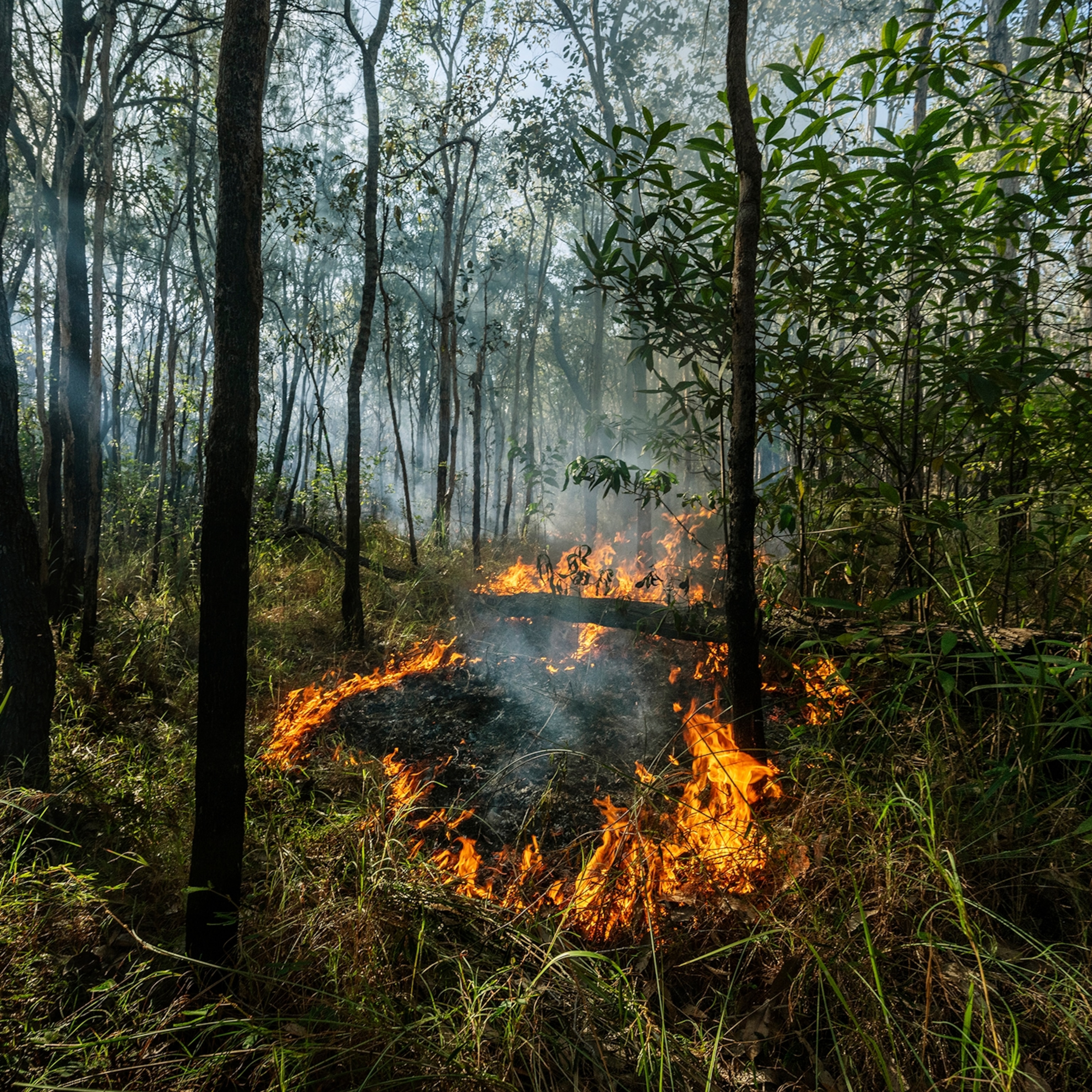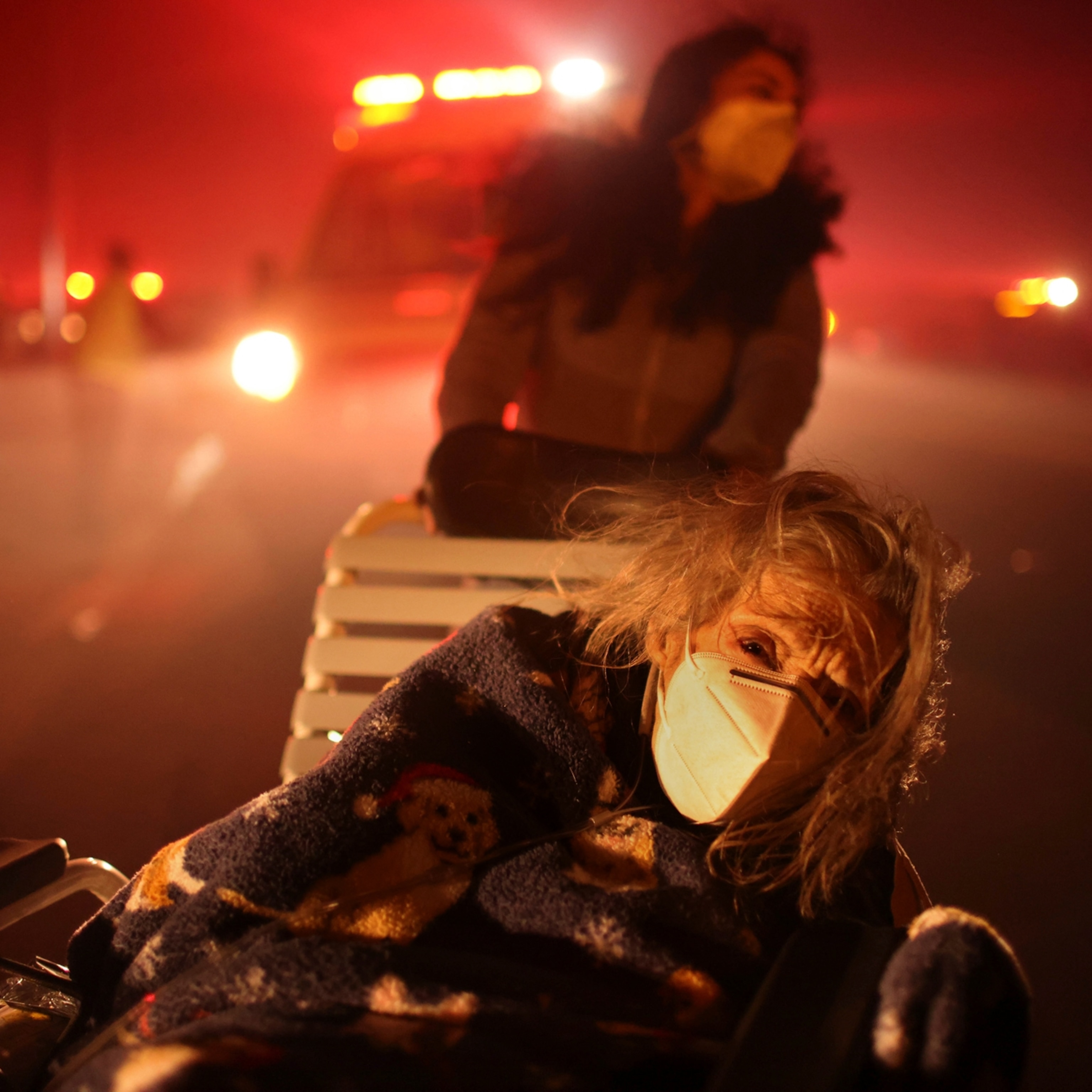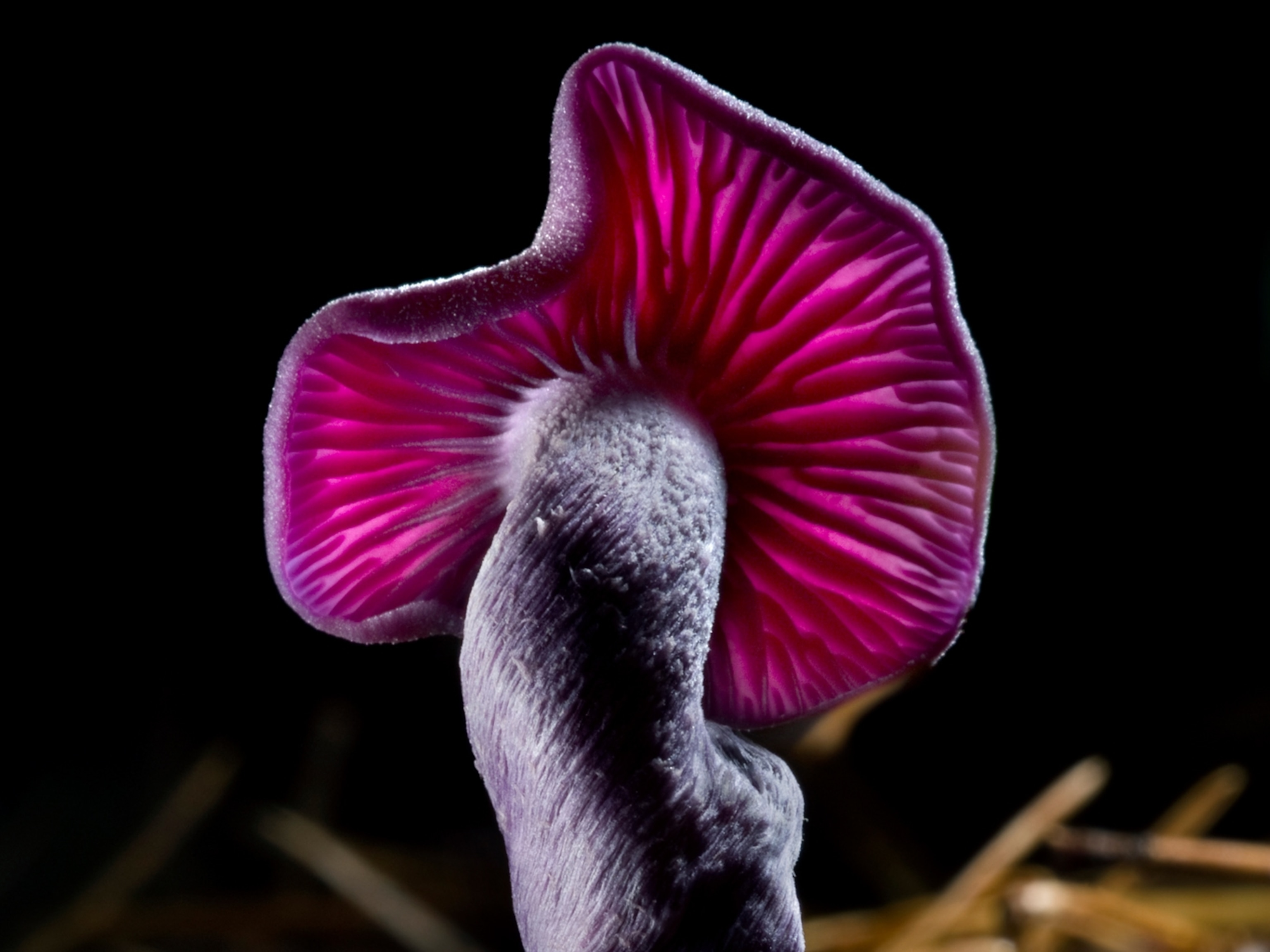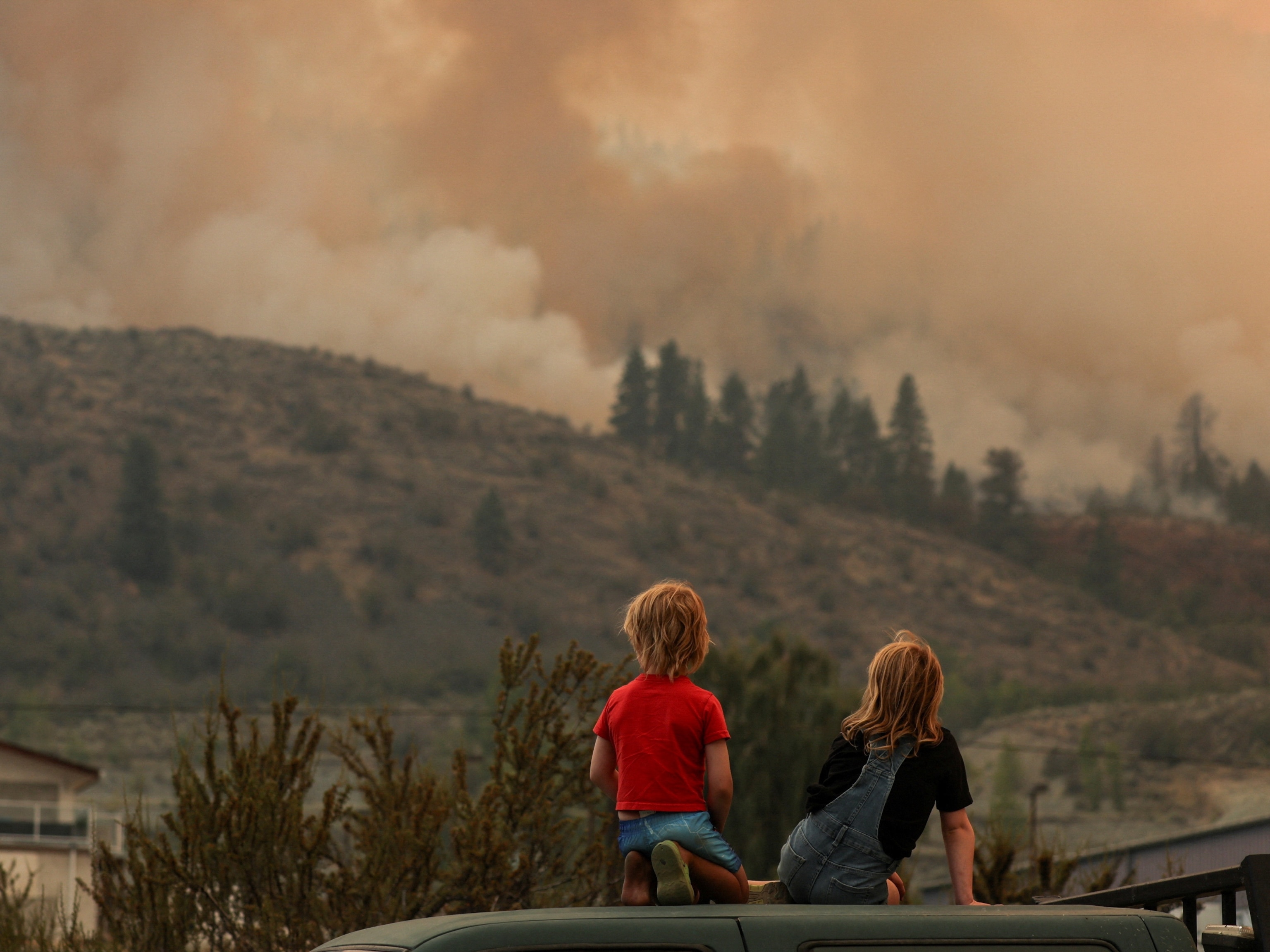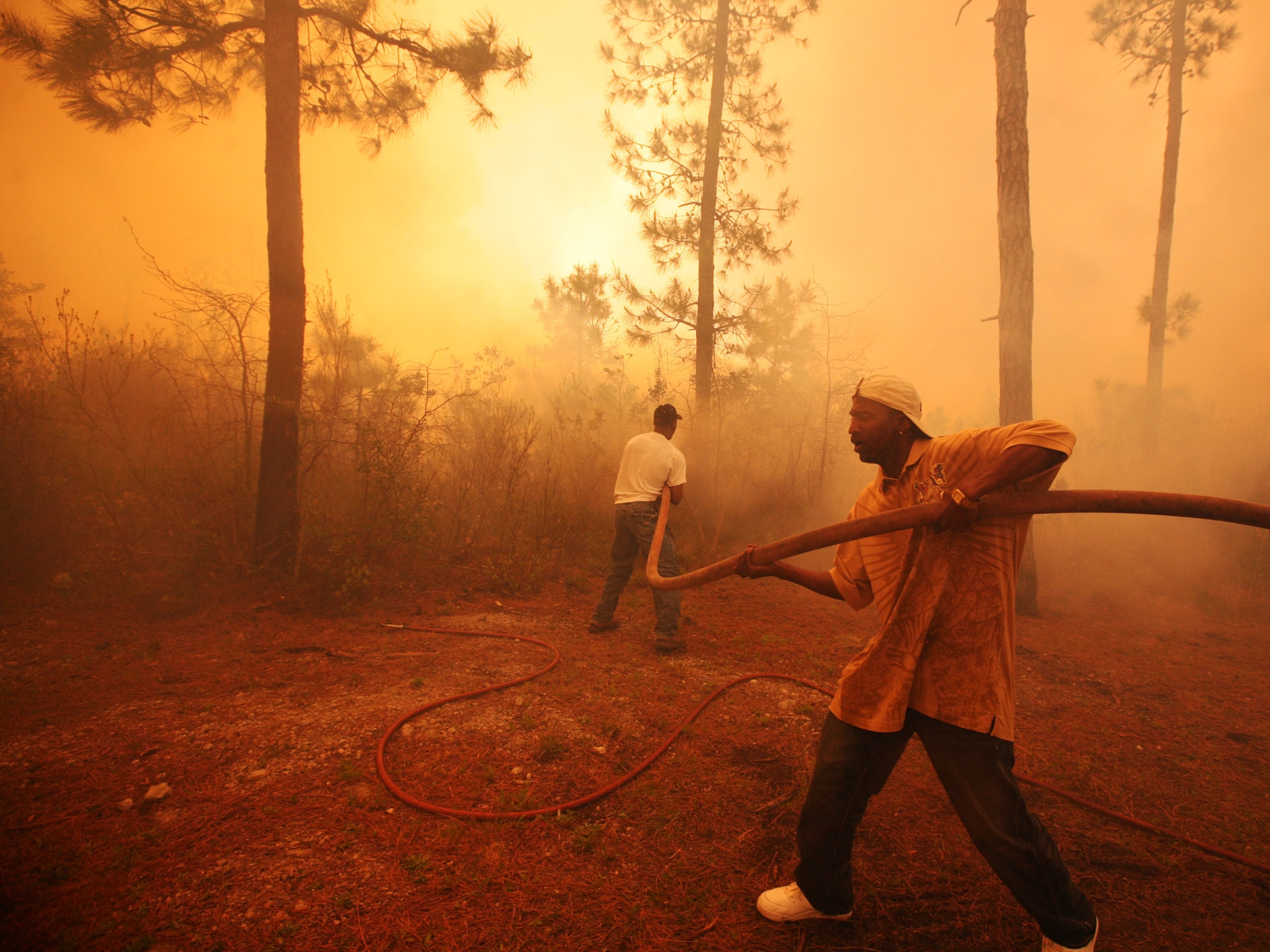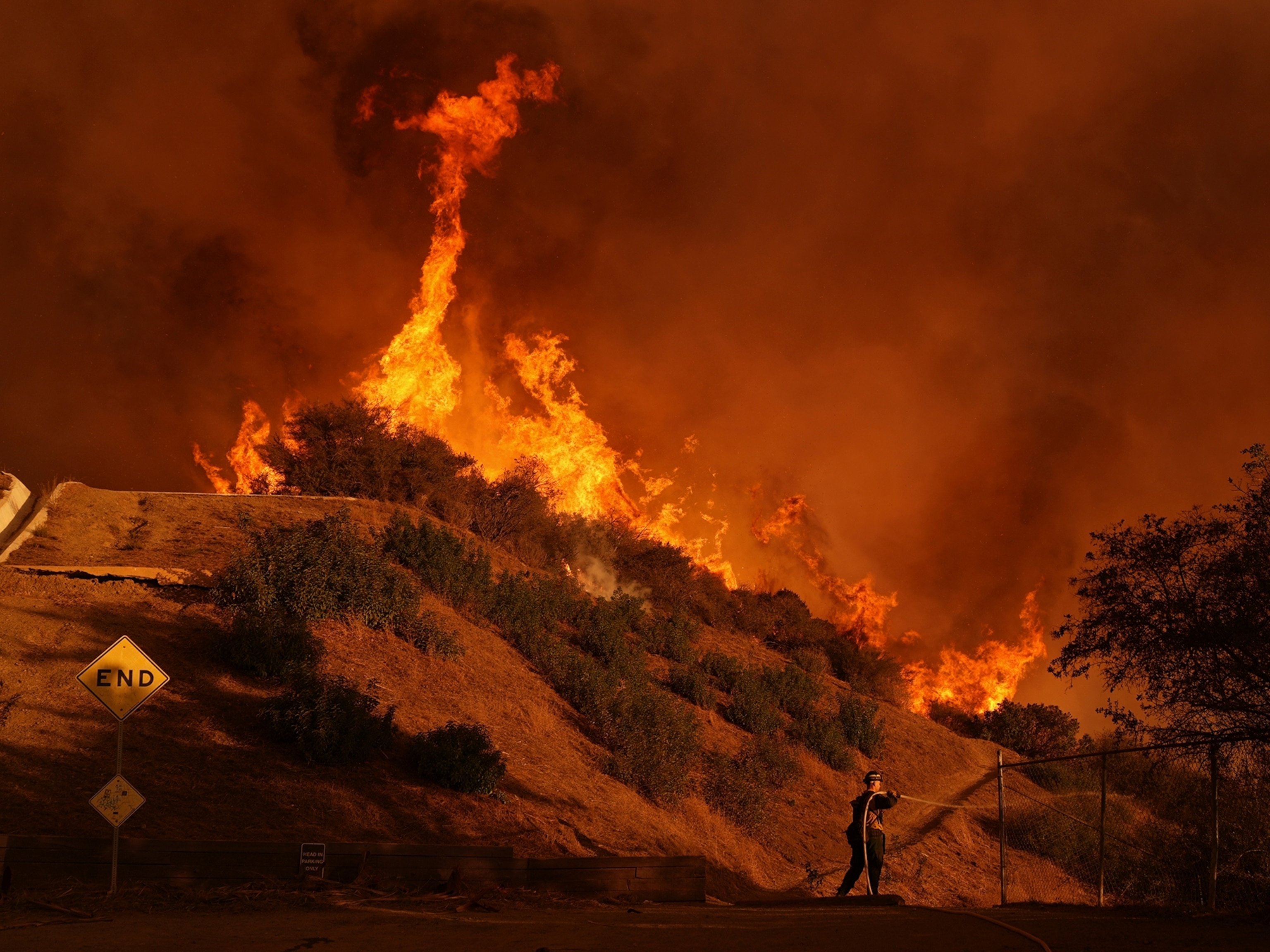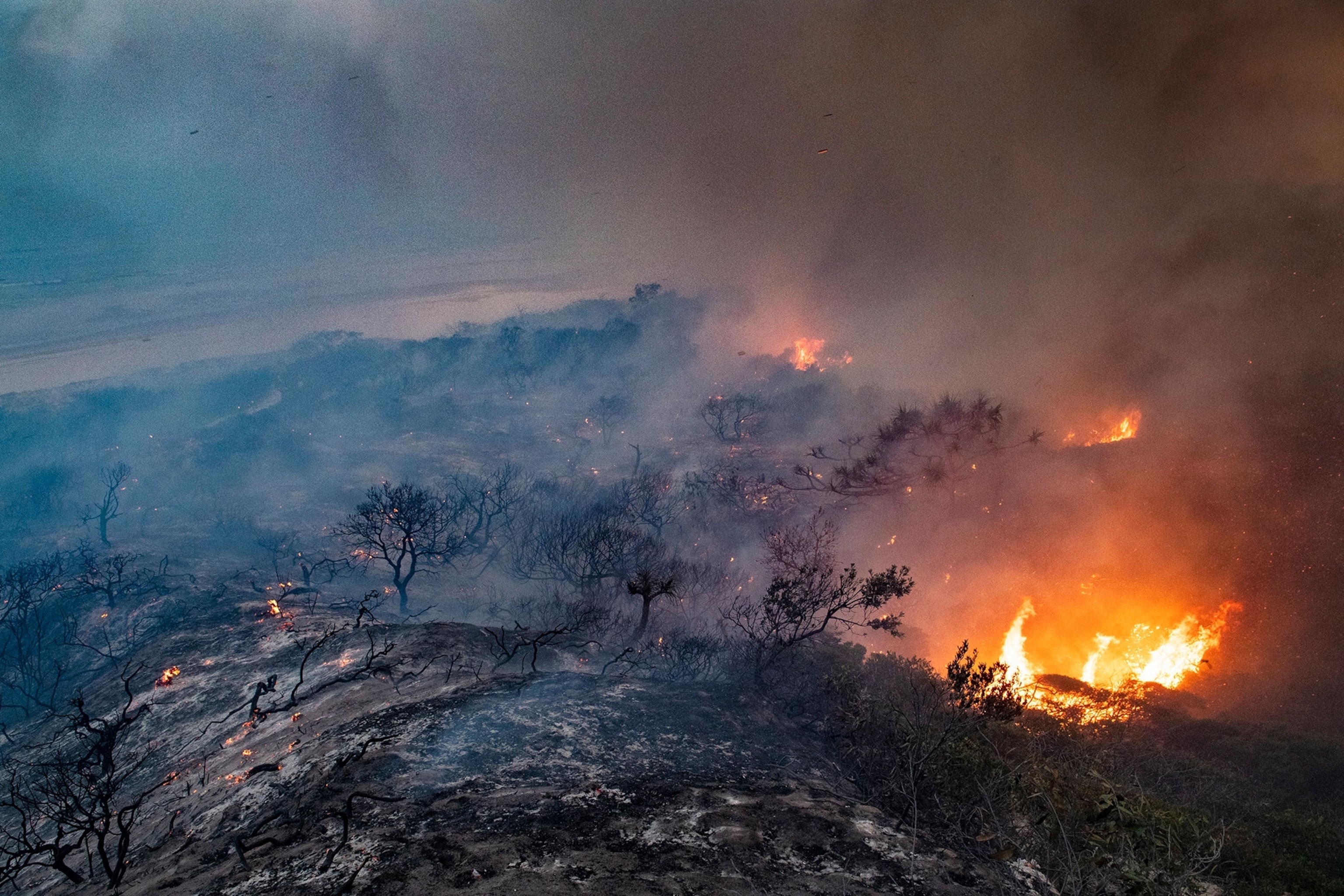
Another Australian wildfire ignites—in one of its most unique ecosystems
A huge fire on Fraser Island illustrates how unique landscapes across Australia remain at risk for transformation by the seemingly incessant flames.
The flames licked sideways and leapt above the treetops. It was January 2020, and Greg Slade raced through smoke and past downed eucalyptus trees along a burning road on Australia’s Kangaroo Island.
Already, Slade, the acting manager of a wilderness retreat, had evacuated 18 staff and dozens of guests. He hung back to protect the hotel, but with 50-knot winds and scorching heat the retreat would not survive the worst fire season in the nation’s history. It, like thousands of homes and business, soon would be reduced to smoking rubble.
It took Slade 12 hours to get to safety that day. He spent the next 10 months traveling and, this October, landed a job at another retreat, on Australia’s 700-square-mile Fraser Island, east of Queensland.

But weeks into his job, a new wildfire forced him to evacuate yet again.
The new blaze “got pretty nasty and came within 100 meters” of his new workplace, says the 42-year-old Slade. Luck, weather, and Australia’s fire brigade saved the business. But for the first time in memory half of Fraser Island, an ecological oasis and UNESCO World Heritage site, burned all at once.
In the wake of last year’s devastating bushfires in Australia, which killed at least 33 people and three billion animals, from koalas to frogs, and torched an area twice the size of Pennsylvania, the country is still just beginning to wrestle with a future that promises ever bigger and more severe fires.
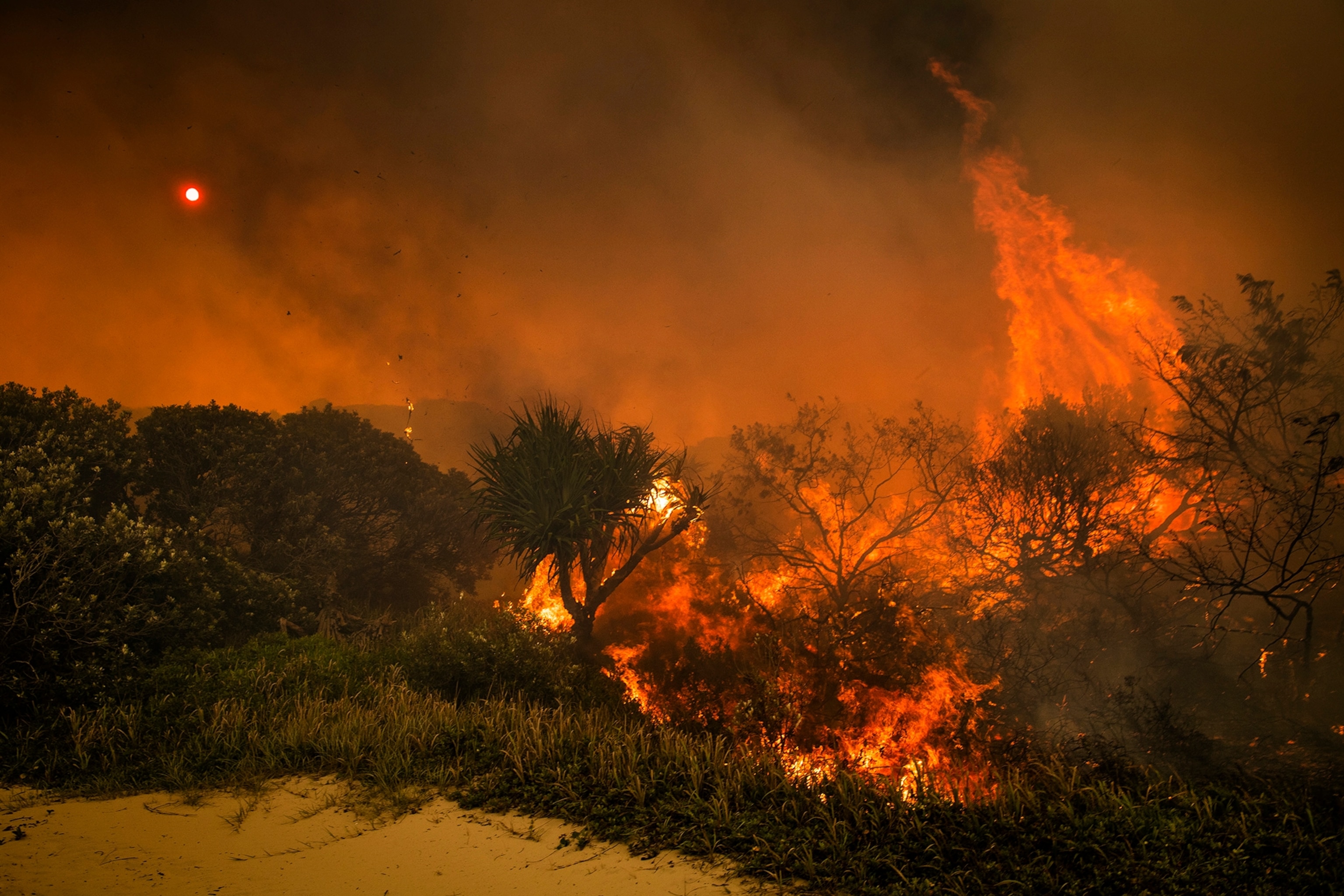
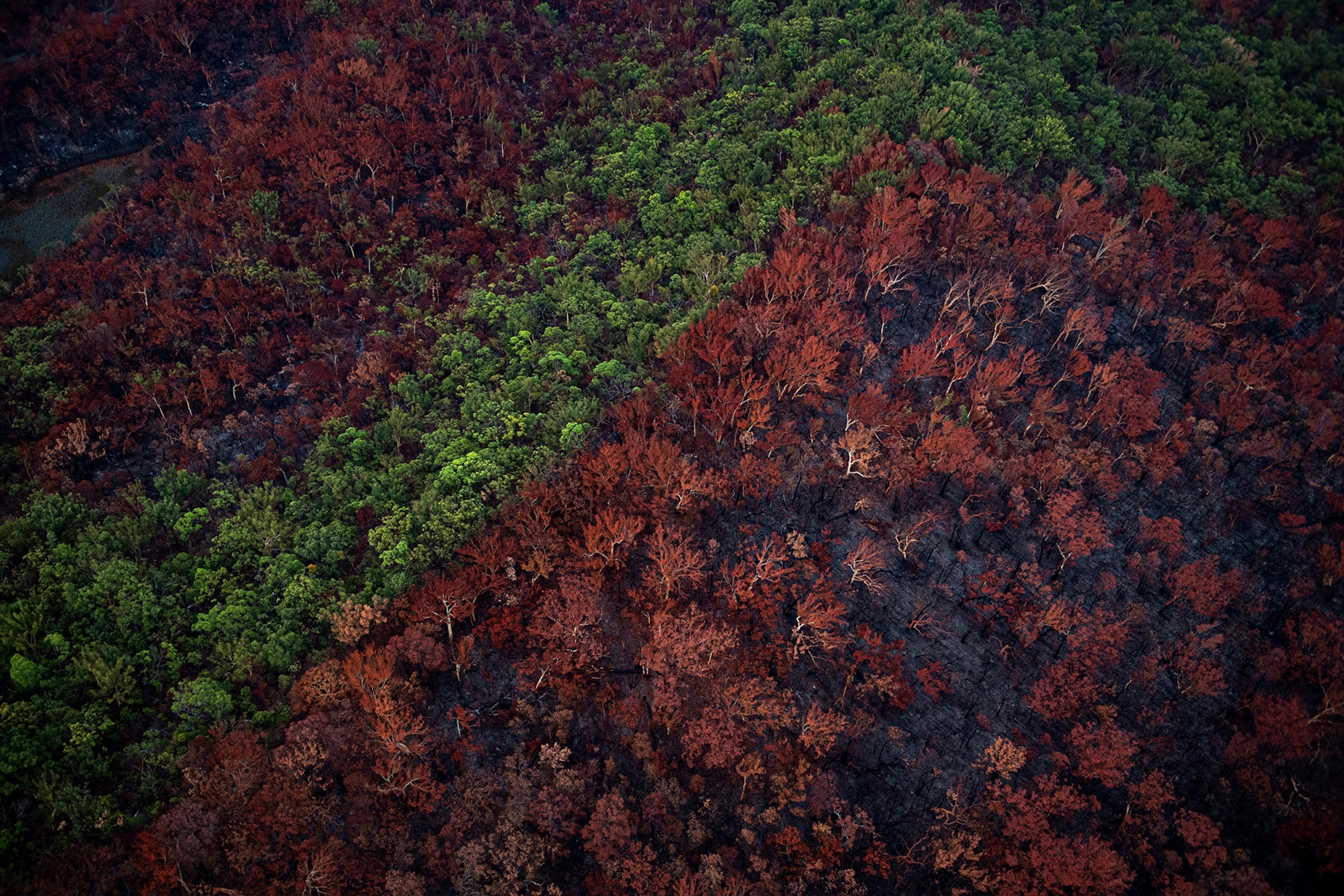
As what is typically the most explosive portion of Australia’s fire season gets underway, weather patterns indicate that this year will see heavy rain, perhaps tempering flames and the country’s years of scorching heat and drought. Rain this week helped firefighters finally corral Fraser Island’s fire, though burns are expected to smolder into January.
But as the island’s experience makes clear, unique landscapes across the continent remain at risk for transformation and conflagration, as climate change, flawed land management, and other environmental threats increasingly collide with fire.
A rare place at risk
Fraser Island, also known by its Aboriginal name, K’gari, is the world’s largest sand dune island, with cliffs, unusual dune lakes, and rare ecosystems. Its signature vista is an inland rainforest of Kauri pines, giant ferns, and turpentine trees that can live for a thousand years. The island’s beaches, heathlands, and forests also are home to sensitive species, from knots, petrels, and other birds to flying foxes, skinks, sea turtles, and wild dingoes.
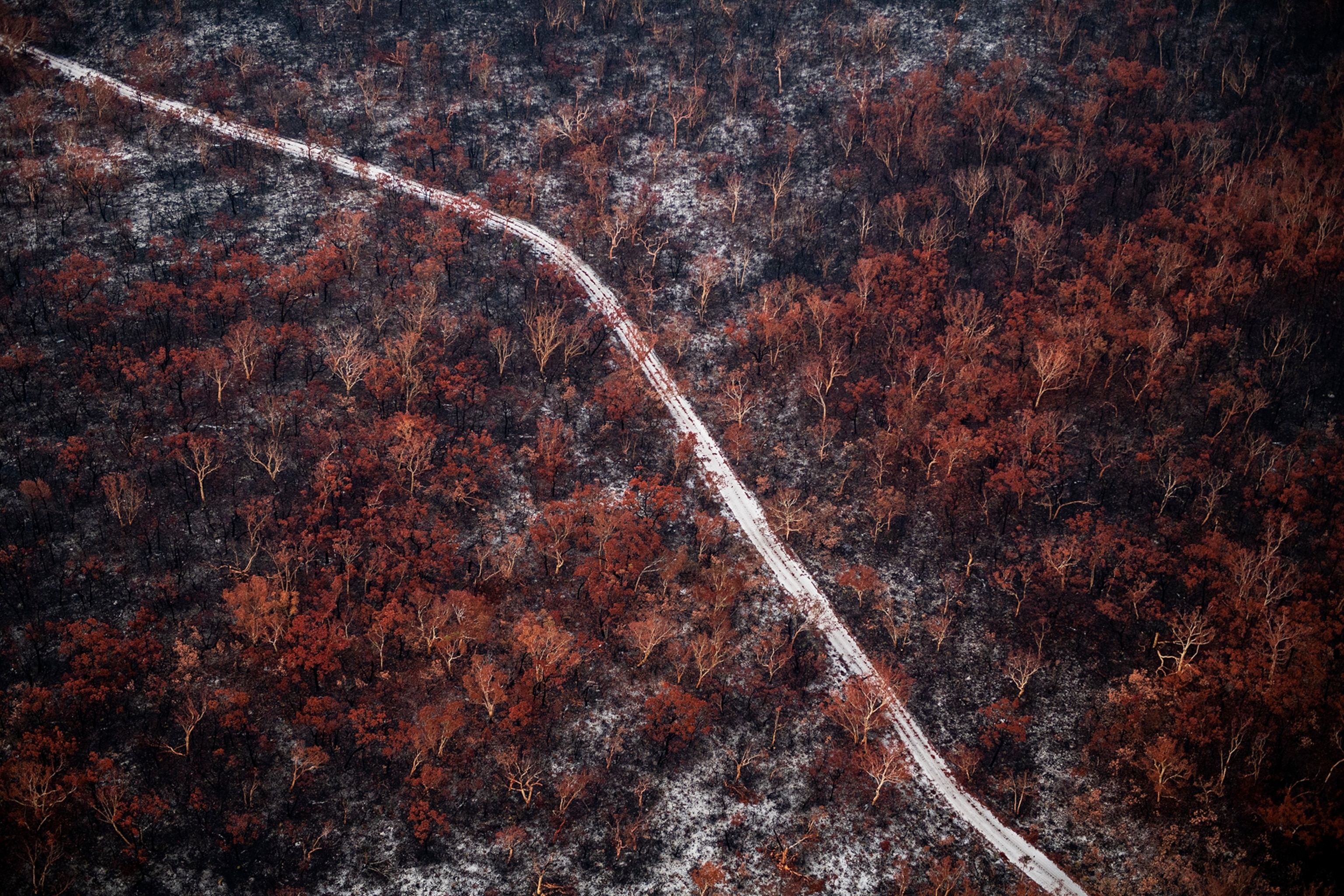
Fraser’s October fire was ignited by an illegal beach campfire. Unlike the racing megafires that burned large sections of New South Wales and Victoria a year earlier, this blaze didn’t move with force or ferocity. But its slow march was relentless. “It was alarming how big it was,” says Rod Fensham, ecology professor at the University of Queensland.
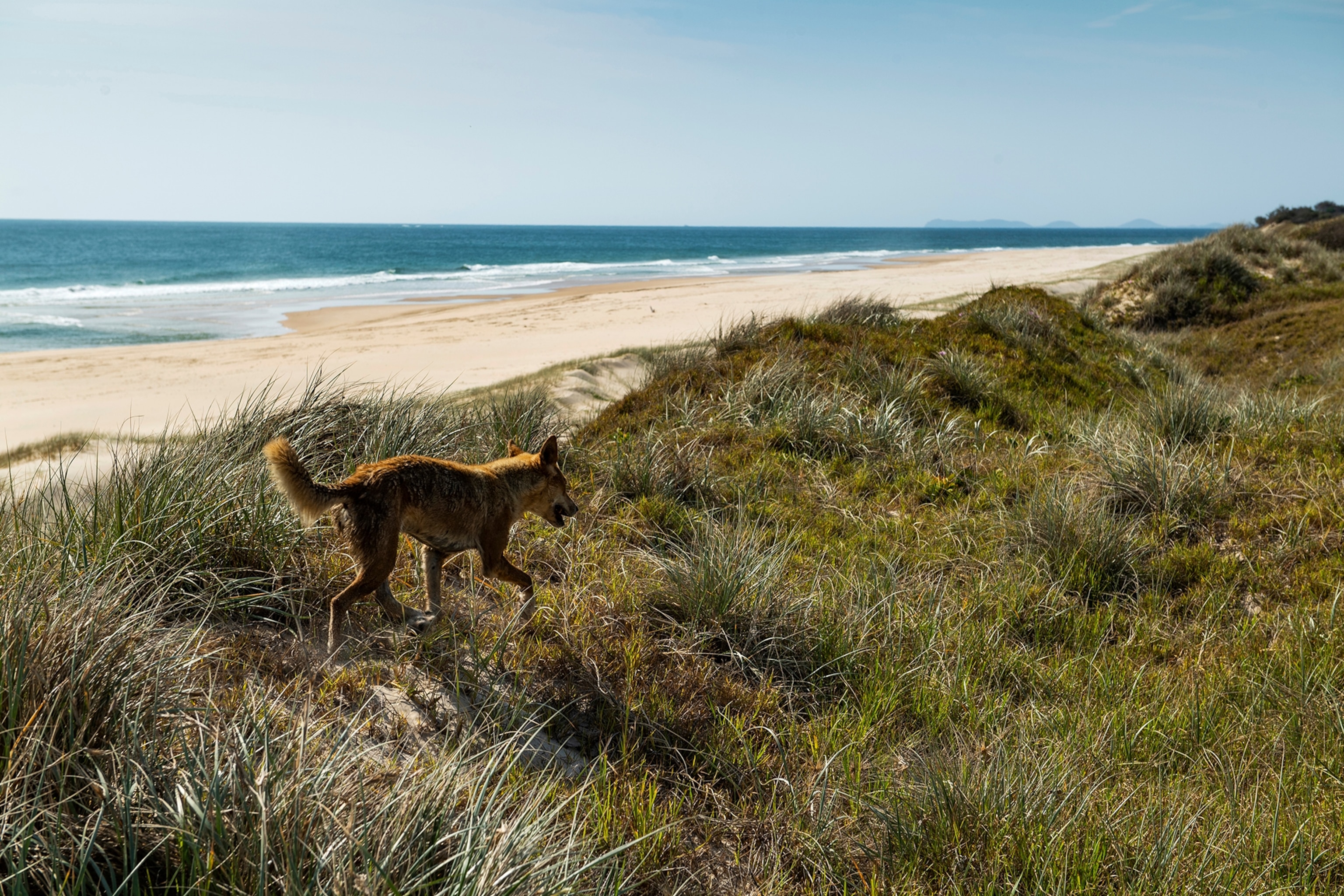
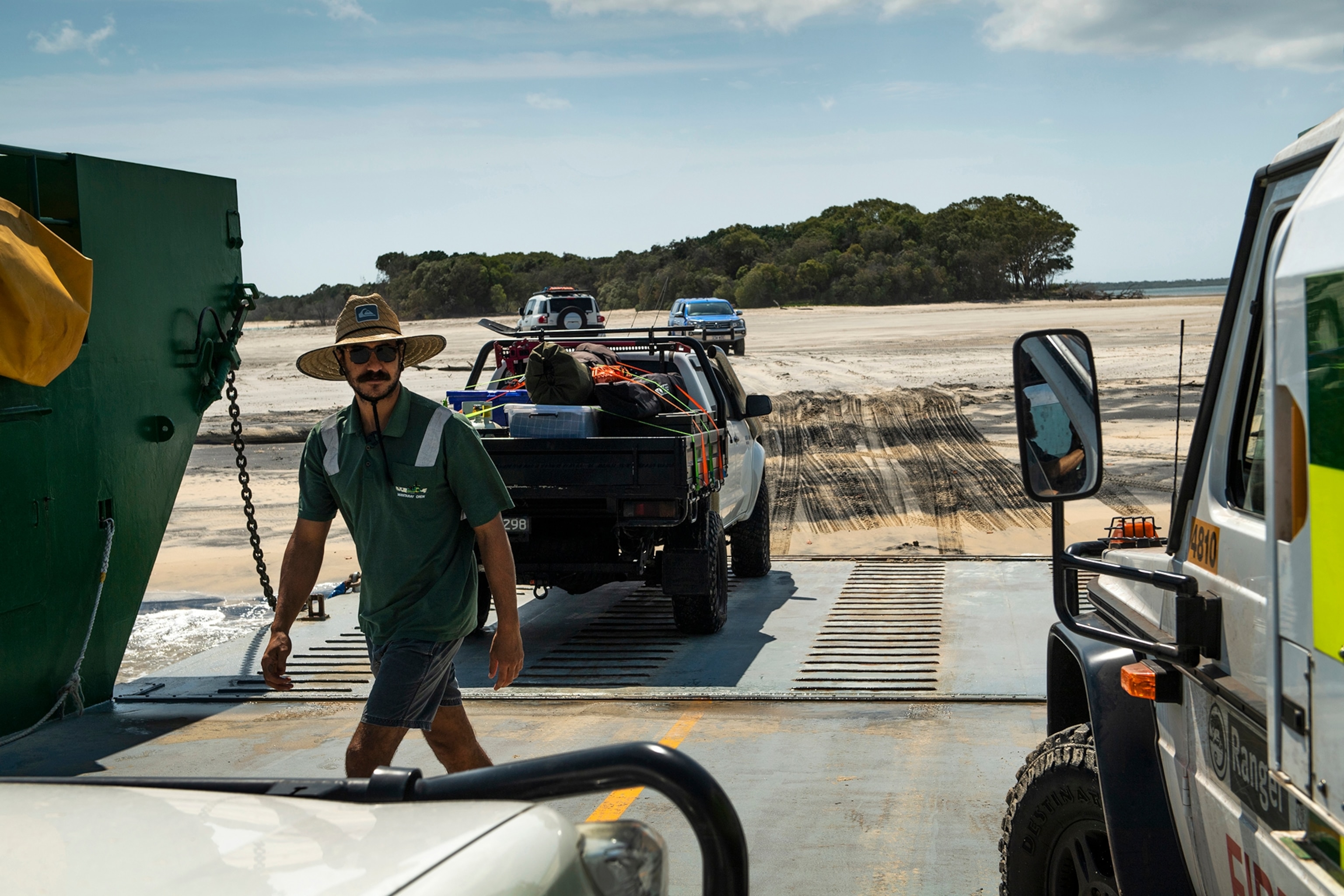
Fire is a natural part of Fraser’s landscape, but in recent years the austral winter dry season has extended later into spring and also been warmed by climate change. According to Jamie Shulmeister, a researcher with New Zealand’s University of Canterbury who has studied Fraser for years, that cures the vegetation faster and makes it ripe for fire to run uncontrolled before it’s noticed.
“In the old days,” he says, “that sort of fire could easily have happened, but the likelihood is that it would have petered out after a day or two.” Instead, this one crisped more than 200,000 acres and burned for two months straight.
Fraser is sparsely populated, and its pockets of homes and businesses were spared. But the island’s geology is unlike anywhere else. It is home to plants and animals living in sensitive niches, such as acidic swamps with fish and amphibians specially adapted to tolerate the water’s chemistry.
Even in areas that evolved with fire, flames that burn too hot can destroy vegetative cover, allowing sand to move with the winds. Once that starts, the island’s dune system can shift, potentially reconfiguring whole ecosystems.
That’s not the only risk. Thus far, it appears fires did not penetrate Fraser Island’s rainforest, Shulmeister and Fensham both say. But a South American tree fungus called myrtle rust infects vegetation near its edge. Big hot burns combined with myrtle rust can alter the ability of shade species to regenerate, making it hard for rainforest plants to take root. For the rainforest, fire can pose “an existential threat to its survival,” Shulmeister says.
It will be years before Shulmeister can say for sure whether this blaze sparked damage that can’t be undone. For now, he hopes the Fraser Island fire is “mostly a warning sign.”
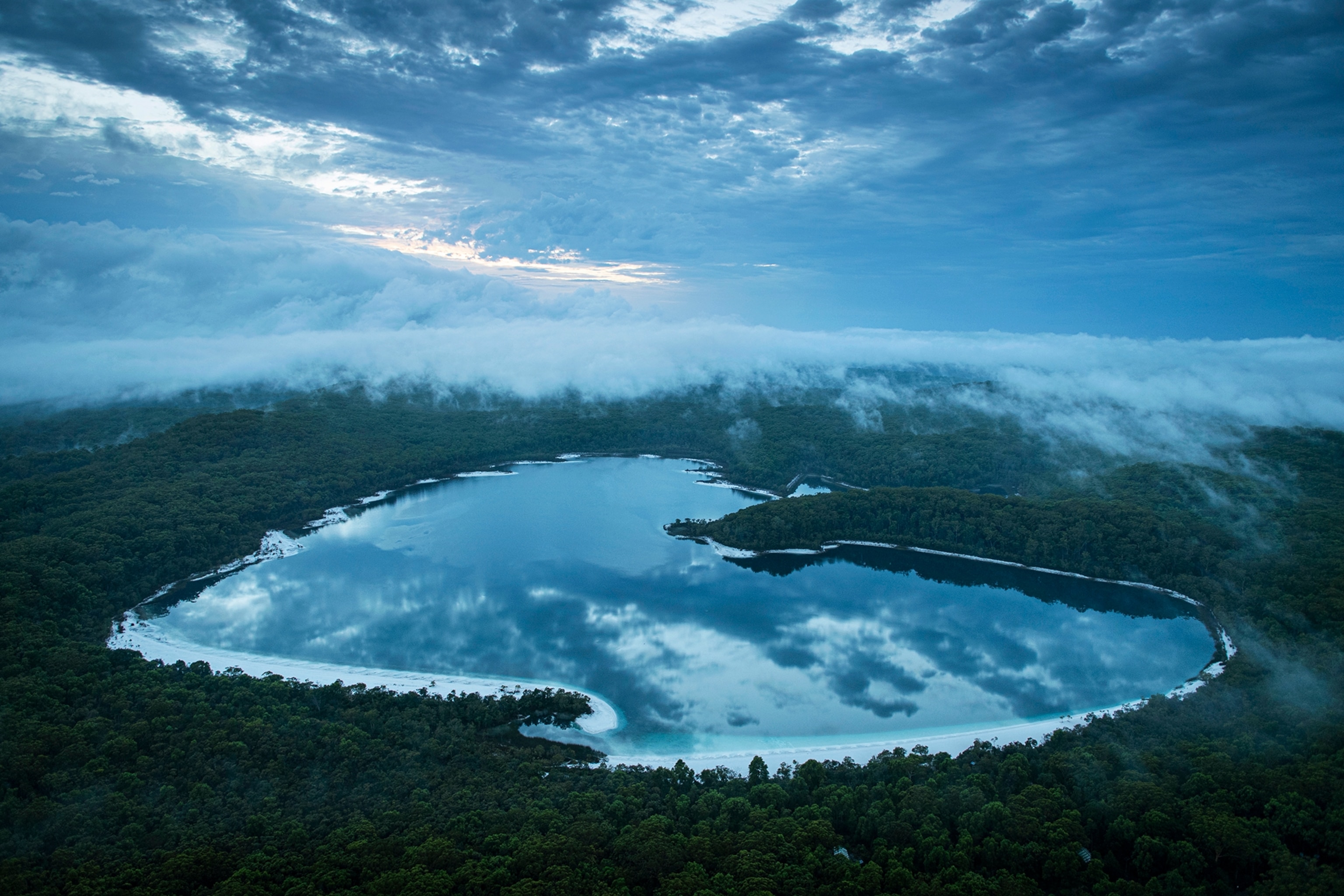
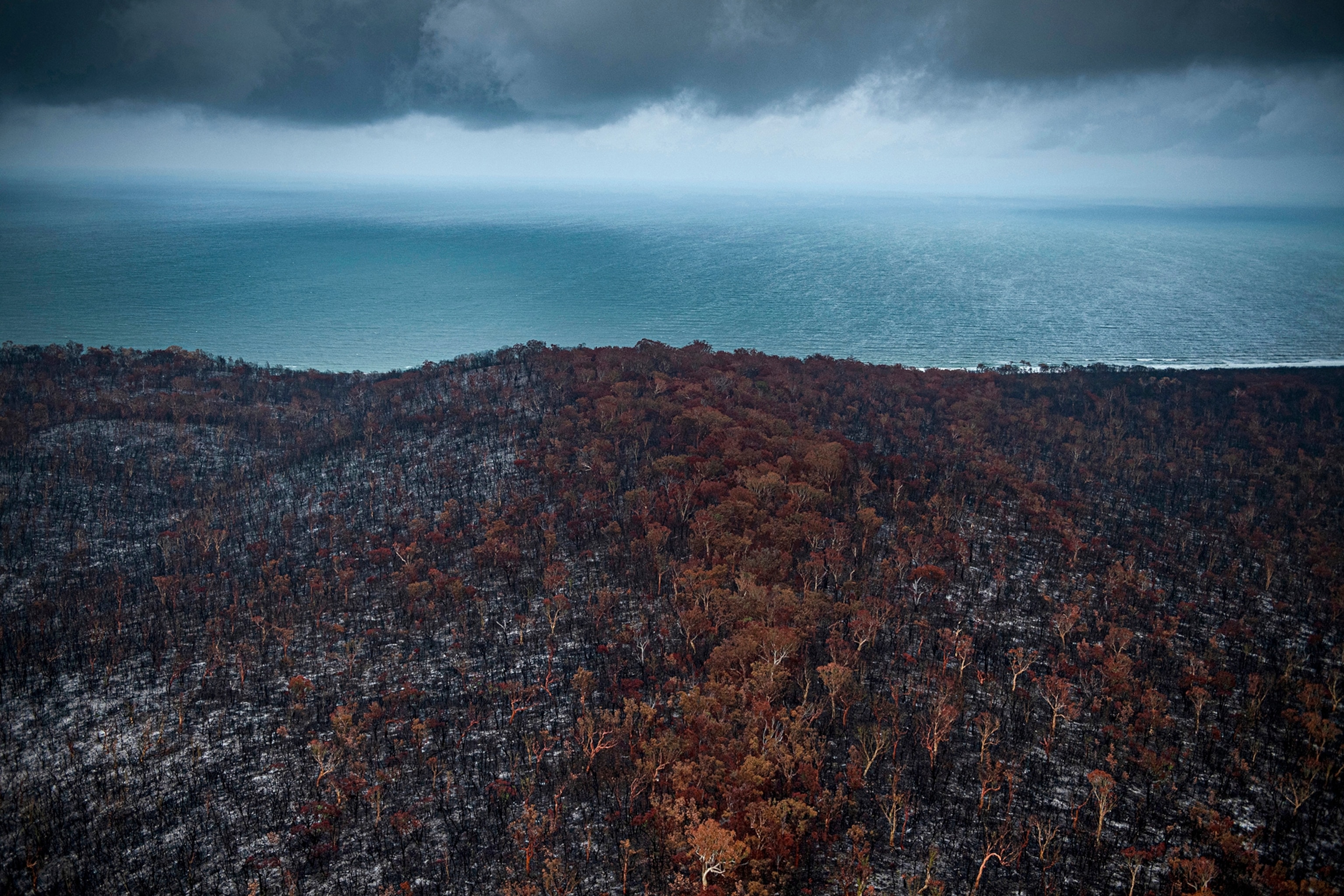
Slade, for one, definitely feels warned.
After his evacuation order lifted, Slade returned to work. Like many Australians, he’s comfortable around wildfire. He saw it in the bush in Victoria, the region around Melbourne in south Australia, in his 20s and has even taken courses in fire management. And unlike his experience on Kangaroo Island, no one on Fraser, even during evacuations, felt like they were fleeing for their lives.
But the other day he took a drive to survey the damage. Even though the Fraser blaze burned slower than last year’s megafires, it was hard not to be humbled by its raw power.
“A lot of vegetation is completely nuked to the ground,” Slade says.
He is not eager to go through that again.


